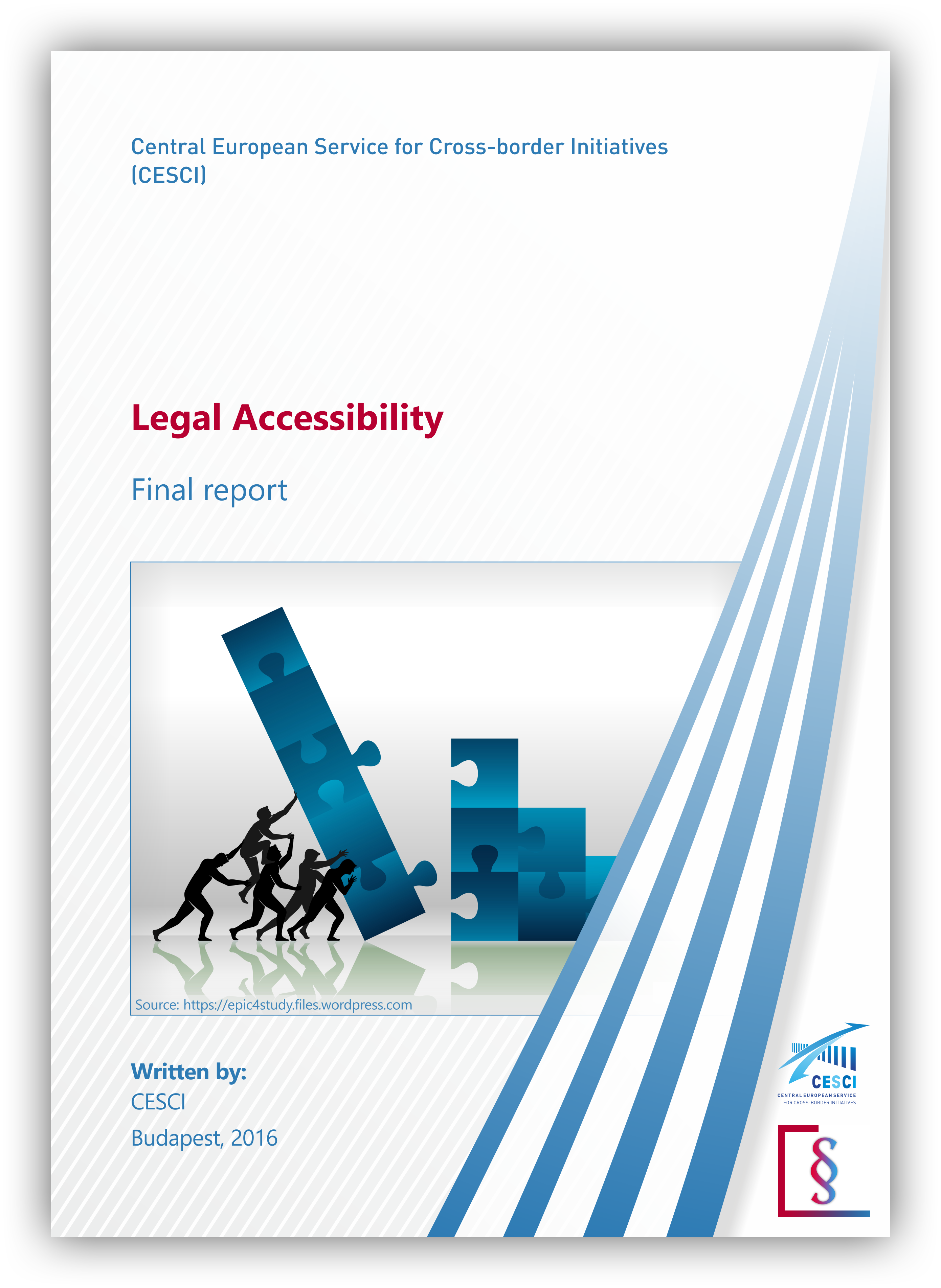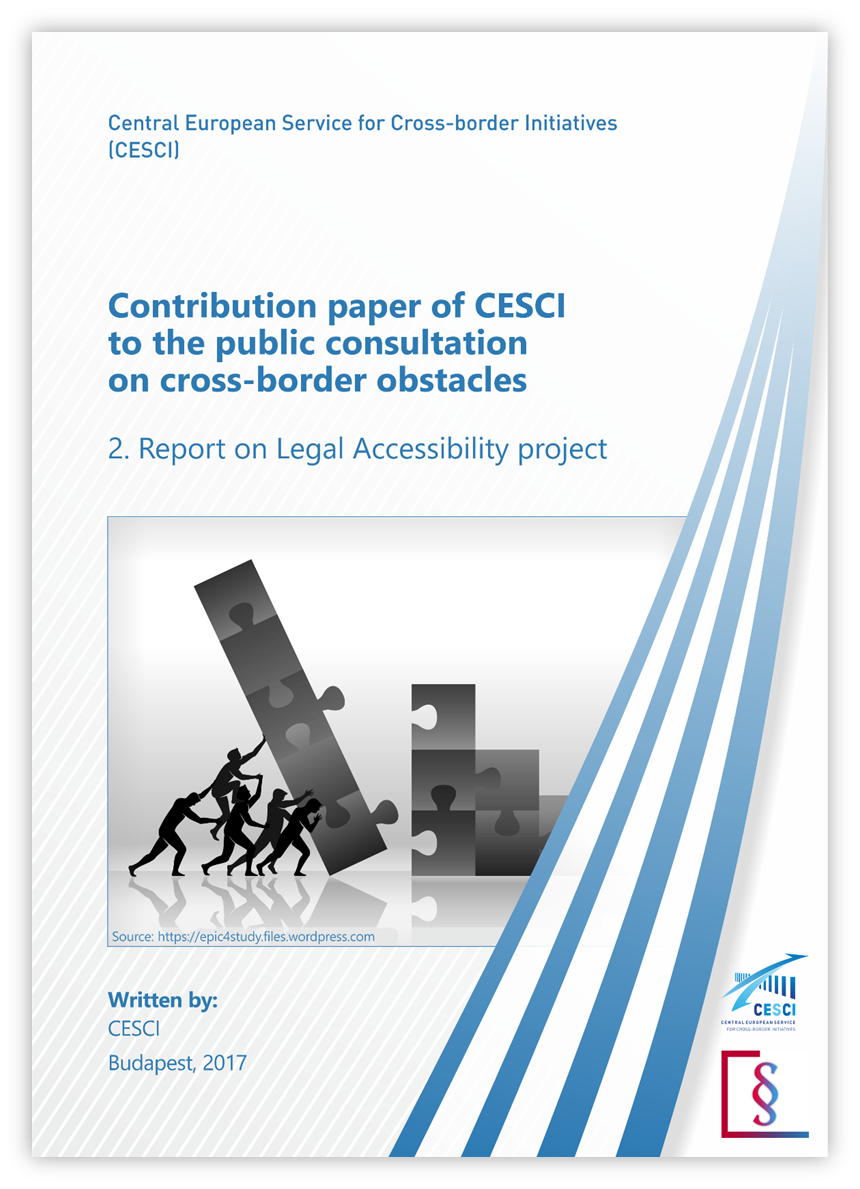You can download the final reports on the project results by clicking on the following pictures:
| Final report on the project (2016) |
Contribution paper of CESCI to the public consultation on cross-border obstacles: 2. Report on Legal Accessibility project (2017) |
The final report intends to inform the readers about the main stages of the research project, which lasted eight months, as well as about the results of professional value that were achieved through carefully structured work. The final report means represents the official termination of the project; nevertheless, we carried out our work in a spirit that articulated new tasks and possibilities. This logic is directly mirrored in the structure of our final report, too.
After the first chapter giving a brief description of the introduction and methodology, the second chapter is set to identify the obstacles and its workflow. We describe in detail the stakeholder workshops offering an appropriate space to reveal the regulatory background that hinders interactions, as well as to identify obstacles, together with their territorial and sectoral aspects. Information collected during this stage marks the thematic ground of our research.
The third chapter describes the research revealing the background of obstacles and the compilation of recommendations. The unfolding of the background of the obstacles was in parallel with a composition of a European outlook, aiming to understand best examples and practices in relevant topics; revealing the existing regulatory environment and policy structure through sectoral interviews with the addressed experts; as well as making a detailed analysis of domestic and European legal frameworks. The compilation of the obstacles has been drafted based on this research work.
In the fourth chapter the results of the project related to each of the obstacles identified at the stakeholder workshops are presented. In each case, we specify the brief overview of the given obstacle, the best practices from Europe (if any) which can be used as models, the list of interviewees and relevant legal texts. Subsequently, we summarise, in a few sentences, our recommendations regarding the possible removal of each of these obstacles. At the end of the chapter, we give a short overview on our horizontal recommendations.
In the fifth chapter, we offer a summary of the main experiences of the project, by evaluating the fulfilment of the objectives set out within the indicators, as well as through a summary table. Finally, we compare the results of the project with contemporary trends in the European Union.

